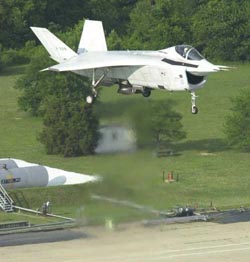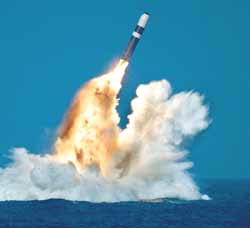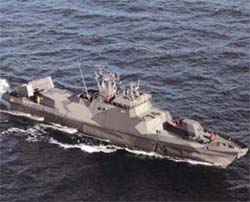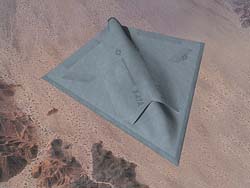Daily News
by Gail Helmer
[ Send Us News | Archives ]
STMicroelectronics and Imagination Technologies have announced that their graphics chip partnership will continue into future generations of products. The PowerVR chip design team is a part of Imagination and is responsible for the Dreamcast's graphics and, most recently, the Kyro and the Kyro II PC graphics chips. In the last year, ST has marketed and produced the Kyro chips for PC graphics cards, which are available from Hercules and other board makers.
While they run at different speeds, both the Kyro and the Kyro II use the same PowerVR series 3 design. The ST announcement mentions that series 4 and series 5 chips are in the works. These future chip generations will continue to use tile-based rendering, which ensures that the chip doesn't waste time drawing parts of 3D scenes that are hidden from the player's view, an inefficiency present to varying degrees in more conventional chip designs from Nvidia and ATI. It's likely that these future chips will introduce features such as hardware transform and lighting, which are absent from the Kyro II for price reasons.
The Boeing Joint Strike Fighter X-32B short-takeoff-and-vertical-landing (STOVL) aircraft reached another major milestone today by completing the JSF program's first vertical landings following transition from conventional to STOVL flight. With the two landings, accomplished on the X-32B's 49th and 51st flights, Boeing completed the government vertical landing requirement for the JSF program.

Boeing now has completed more than 70 percent of the X-32B's flight-test requirements since the aircraft's first flight in March.
After a conventional takeoff, Boeing lead STOVL test pilot Dennis O'Donoghue re-directed the X-32B's engine thrust from the cruise nozzle to its lift nozzles and then decelerated to a hover 150 feet above the ground. Once stabilized in the hover, O'Donoghue descended the plane to 50 feet, maneuvered over the center of the hover pit and landed vertically. The aircraft was then refueled and following another conventional takeoff, transitioned to a hover and landed vertically on the hover pad.
"I couldn't be more proud of the X-32B's performance -- the plane responded exactly as I expected," O'Donoghue said. "Transition to STOVL flight was smooth, and flying qualities, hover and vertical landing performance mirrored our predictions."
Today's vertical landing came just three days after the X-32B completed four hovers during five flights on June 24. Together, these flights demonstrate the aircraft's robustness and the reliability of the Boeing direct-lift system.
Next, government STOVL pilots will fly the X-32B for additional vertical landings. Following completion of all customer requirements, Boeing will complete its own company objectives. Besides simplicity and low pilot workload, other significant advantages of the company's third-generation direct-lift system are low maintenance and safety.
"Reducing maintenance is extremely important to the military services, particularly from a life-cycle cost standpoint, and our reliable, safe, proven system fits the bill," Statkus said. "We're improving -- not inventing --which will guarantee the lowest technical and cost risk going into the next phases of the program."
Statkus said it is important to note that extensive ground environment tests conducted on the X-32B in late March confirmed the aircraft's STOVL system operates at acoustic and temperature levels lower than predicted at full power. "The testing verified we meet all requirements and provide a safe operating environment for the customer," he said.
The X-32B is validating the Boeing direct-lift approach to the STOVL requirements for the Marine Corps and the United Kingdom's Royal Navy and Royal Air Force. Underscoring the commonality of its JSF design, Boeing is using two aircraft to demonstrate requirements for the U.S. Air Force, Navy, Marine Corps, U.K. Royal Navy and Royal Air Force in the concept-demonstration phase of the JSF program.
The Boeing X-32A aircraft -- with no service-specific modifications --demonstrated both aircraft-carrier and conventional-takeoff-and-landing objectives. The X-32A completed its flight-test program Feb. 3 after 66 flights and 50.4 flight hours with six different pilots at the controls. Boeing is competing to build the JSF under a four-year U.S. Air Force, Navy and Marine Corps concept demonstration contract, while also defining the design for the operational JSF. A competition winner is scheduled to be selected later this year.
Three Successful Tests Of Trident II D5 Missiles
Three US Navy Trident II D5 Fleet Ballistic Missiles (FBM), built by Lockheed Martin Space Systems--Missiles & Space Operations, were successfully launched in a test operation conducted yesterday evening from the USS Louisiana (SSBN 743) at the Eastern Test Range off the eastern Florida coast.

The tests are part of a continuing series of operational evaluation tests conducted by the Navy to monitor the safety, reliability, readiness and performance of the Trident II D5 Strategic Weapon System (SWS).
Trident II D5 is a three-stage, solid propellant, inertial-guided submarine-launched ballistic missile. It is 44.5 ft in length, 83 inches in diameter, weighs 130,000 lbs., has a range greater than 4,000 nautical miles, and carries up to eight Multiple Independent Reentry Vehicles (MIRVs).
Trident II D5, the sixth generation of FBMs developed by Lockheed Martin for the US Navy, is presently deployed in the Atlantic Ocean. The Navy plans to deploy the D5 missile system into the Pacific SSBN fleet over the next several years.
The Navy selected Lockheed Martin Missiles & Space as its prime missile contractor in 1955. Since then, the FBM team has produced the Polaris (A1), Polaris (A2), Polaris (A3), Poseidon (C3), Trident I (C4) and the Trident II (D5) missile.
The US Navy has purchased 384 Trident II D5 missiles since initial production began in 1987.
EADS Awarded Finnish Navy Contract
The Finnish Navy has awarded EADS a multimillion Euro contract as Combat System Prime Contractor and System Integrator and for the supply of the Combat Management System for its 'Squadron 2000', which consists of two Fast Attack Craft Vessels and four Air Cushion Vehicles.

The Combat Management System, newly developed by EADS' Systems & Defence Electronics business unit, has an open system architecture and commercial infrastructure using industrial standards and commercial-of-the-shelf software and hardware products.
The application software is built up by components developed by EADS and Finnish Industry, as substantial participation by Finnish Industry is part of the agreement.
"The use of commercial components is a crucial point in the development of defence electronics", underscores Dr. Stefan Zoller, President and CEO of EADS' Systems & Defence Electronics business unit, "because it alleviates further system adaptation and offers substantial growth potential at low cost and risk."
The combat management system is designed to provide accurate and fast-reacting fusion, analysis and transmission of sensor data to enable the efficient deployment of ships and other resources, particularly in the complex threat scenario of littoral warfare.
EADS says the system offers substantial growth potential over a ship's operational life of 30 years.
Rising Demand For UAV's
By providing critical data quickly and without danger to human lives, unmanned aerial vehicles (UAVs) are meeting the insatiable demands for information by civil, commercial and military organisations. New analysis by Frost & Sullivan, in its 'World Unmanned Aerial Vehicle (UAV) System Markets' report, reveals this market generated $2.4 billion in 2000 and is projected to reach $5.56 billion in 2007.

The U.S. Navy Unmanned Combat Air Vehicle, Pegasus
"UAV applications are set to explode in the commercial market once airspace regulations are defined and published. Currently, the complexity of controlling airspace shared by both manned and unmanned systems presents a thorny barrier to the civilian UAV market segment." says Frost & Sullivan Industry Analyst Quinton Long.
"Whereas the military can use its own airspace or request special use of restricted airspace, civilian users have no such privileges. Market participants must commit to working with national airspace management organisations to develop, establish and manage unmanned aerial systems in commercial airspace. Manufacturers must develop the ability to market beyond this single customer market. The potential uses for UAVs outside the military are numerous and increasing." says Long.
Expanding to new markets will mean that manufacturers will need to quickly learn their new customers' objectives. "Every system designed to date has received numerous customisations due to perceived unique mission requirements."
[ Send Us News | Archives ]
by Gail Helmer
Wednesday, June 27, 2001
- More Kyro Graphics Chip Announced
- X-32B Completes First Vertical Landings
- Three Successful Tests Of Trident II D5 Missiles
- EADS Awarded Finnish Navy Contract
- Rising Demand For UAV's
PC News
More Kyro Graphics Chip AnnouncedSTMicroelectronics and Imagination Technologies have announced that their graphics chip partnership will continue into future generations of products. The PowerVR chip design team is a part of Imagination and is responsible for the Dreamcast's graphics and, most recently, the Kyro and the Kyro II PC graphics chips. In the last year, ST has marketed and produced the Kyro chips for PC graphics cards, which are available from Hercules and other board makers.
While they run at different speeds, both the Kyro and the Kyro II use the same PowerVR series 3 design. The ST announcement mentions that series 4 and series 5 chips are in the works. These future chip generations will continue to use tile-based rendering, which ensures that the chip doesn't waste time drawing parts of 3D scenes that are hidden from the player's view, an inefficiency present to varying degrees in more conventional chip designs from Nvidia and ATI. It's likely that these future chips will introduce features such as hardware transform and lighting, which are absent from the Kyro II for price reasons.
Military News
X-32B Completes First Vertical LandingsThe Boeing Joint Strike Fighter X-32B short-takeoff-and-vertical-landing (STOVL) aircraft reached another major milestone today by completing the JSF program's first vertical landings following transition from conventional to STOVL flight. With the two landings, accomplished on the X-32B's 49th and 51st flights, Boeing completed the government vertical landing requirement for the JSF program.

Boeing now has completed more than 70 percent of the X-32B's flight-test requirements since the aircraft's first flight in March.
After a conventional takeoff, Boeing lead STOVL test pilot Dennis O'Donoghue re-directed the X-32B's engine thrust from the cruise nozzle to its lift nozzles and then decelerated to a hover 150 feet above the ground. Once stabilized in the hover, O'Donoghue descended the plane to 50 feet, maneuvered over the center of the hover pit and landed vertically. The aircraft was then refueled and following another conventional takeoff, transitioned to a hover and landed vertically on the hover pad.
"I couldn't be more proud of the X-32B's performance -- the plane responded exactly as I expected," O'Donoghue said. "Transition to STOVL flight was smooth, and flying qualities, hover and vertical landing performance mirrored our predictions."
Today's vertical landing came just three days after the X-32B completed four hovers during five flights on June 24. Together, these flights demonstrate the aircraft's robustness and the reliability of the Boeing direct-lift system.
Next, government STOVL pilots will fly the X-32B for additional vertical landings. Following completion of all customer requirements, Boeing will complete its own company objectives. Besides simplicity and low pilot workload, other significant advantages of the company's third-generation direct-lift system are low maintenance and safety.
"Reducing maintenance is extremely important to the military services, particularly from a life-cycle cost standpoint, and our reliable, safe, proven system fits the bill," Statkus said. "We're improving -- not inventing --which will guarantee the lowest technical and cost risk going into the next phases of the program."
Statkus said it is important to note that extensive ground environment tests conducted on the X-32B in late March confirmed the aircraft's STOVL system operates at acoustic and temperature levels lower than predicted at full power. "The testing verified we meet all requirements and provide a safe operating environment for the customer," he said.
The X-32B is validating the Boeing direct-lift approach to the STOVL requirements for the Marine Corps and the United Kingdom's Royal Navy and Royal Air Force. Underscoring the commonality of its JSF design, Boeing is using two aircraft to demonstrate requirements for the U.S. Air Force, Navy, Marine Corps, U.K. Royal Navy and Royal Air Force in the concept-demonstration phase of the JSF program.
The Boeing X-32A aircraft -- with no service-specific modifications --demonstrated both aircraft-carrier and conventional-takeoff-and-landing objectives. The X-32A completed its flight-test program Feb. 3 after 66 flights and 50.4 flight hours with six different pilots at the controls. Boeing is competing to build the JSF under a four-year U.S. Air Force, Navy and Marine Corps concept demonstration contract, while also defining the design for the operational JSF. A competition winner is scheduled to be selected later this year.
Three Successful Tests Of Trident II D5 Missiles
Three US Navy Trident II D5 Fleet Ballistic Missiles (FBM), built by Lockheed Martin Space Systems--Missiles & Space Operations, were successfully launched in a test operation conducted yesterday evening from the USS Louisiana (SSBN 743) at the Eastern Test Range off the eastern Florida coast.

The tests are part of a continuing series of operational evaluation tests conducted by the Navy to monitor the safety, reliability, readiness and performance of the Trident II D5 Strategic Weapon System (SWS).
Trident II D5 is a three-stage, solid propellant, inertial-guided submarine-launched ballistic missile. It is 44.5 ft in length, 83 inches in diameter, weighs 130,000 lbs., has a range greater than 4,000 nautical miles, and carries up to eight Multiple Independent Reentry Vehicles (MIRVs).
Trident II D5, the sixth generation of FBMs developed by Lockheed Martin for the US Navy, is presently deployed in the Atlantic Ocean. The Navy plans to deploy the D5 missile system into the Pacific SSBN fleet over the next several years.
The Navy selected Lockheed Martin Missiles & Space as its prime missile contractor in 1955. Since then, the FBM team has produced the Polaris (A1), Polaris (A2), Polaris (A3), Poseidon (C3), Trident I (C4) and the Trident II (D5) missile.
The US Navy has purchased 384 Trident II D5 missiles since initial production began in 1987.
EADS Awarded Finnish Navy Contract
The Finnish Navy has awarded EADS a multimillion Euro contract as Combat System Prime Contractor and System Integrator and for the supply of the Combat Management System for its 'Squadron 2000', which consists of two Fast Attack Craft Vessels and four Air Cushion Vehicles.

The Combat Management System, newly developed by EADS' Systems & Defence Electronics business unit, has an open system architecture and commercial infrastructure using industrial standards and commercial-of-the-shelf software and hardware products.
The application software is built up by components developed by EADS and Finnish Industry, as substantial participation by Finnish Industry is part of the agreement.
"The use of commercial components is a crucial point in the development of defence electronics", underscores Dr. Stefan Zoller, President and CEO of EADS' Systems & Defence Electronics business unit, "because it alleviates further system adaptation and offers substantial growth potential at low cost and risk."
The combat management system is designed to provide accurate and fast-reacting fusion, analysis and transmission of sensor data to enable the efficient deployment of ships and other resources, particularly in the complex threat scenario of littoral warfare.
EADS says the system offers substantial growth potential over a ship's operational life of 30 years.
Rising Demand For UAV's
By providing critical data quickly and without danger to human lives, unmanned aerial vehicles (UAVs) are meeting the insatiable demands for information by civil, commercial and military organisations. New analysis by Frost & Sullivan, in its 'World Unmanned Aerial Vehicle (UAV) System Markets' report, reveals this market generated $2.4 billion in 2000 and is projected to reach $5.56 billion in 2007.

"UAV applications are set to explode in the commercial market once airspace regulations are defined and published. Currently, the complexity of controlling airspace shared by both manned and unmanned systems presents a thorny barrier to the civilian UAV market segment." says Frost & Sullivan Industry Analyst Quinton Long.
"Whereas the military can use its own airspace or request special use of restricted airspace, civilian users have no such privileges. Market participants must commit to working with national airspace management organisations to develop, establish and manage unmanned aerial systems in commercial airspace. Manufacturers must develop the ability to market beyond this single customer market. The potential uses for UAVs outside the military are numerous and increasing." says Long.
Expanding to new markets will mean that manufacturers will need to quickly learn their new customers' objectives. "Every system designed to date has received numerous customisations due to perceived unique mission requirements."
